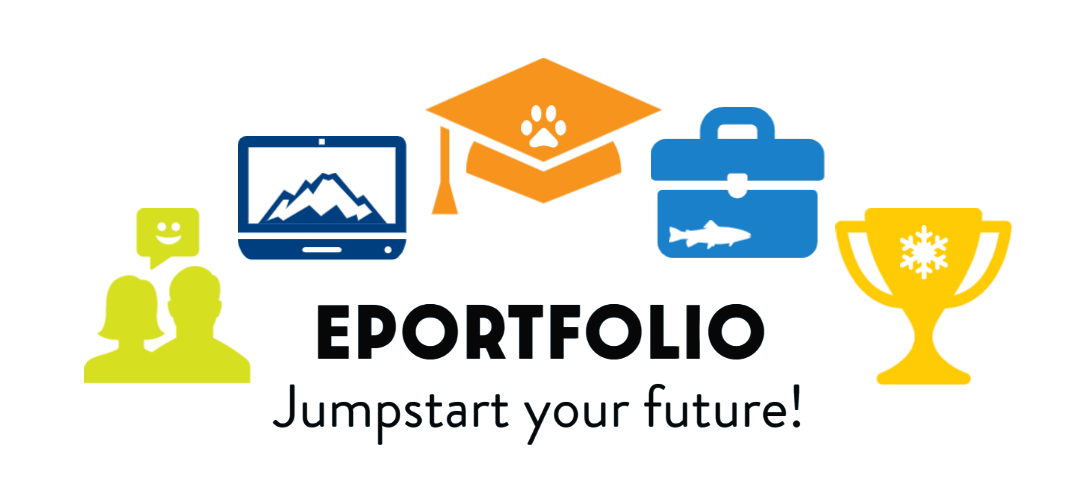The first task towards promoting ePortfolios during the semester was actually just before classes began: at Catapalooza. Though I spent most of my time at the booth for the student organization Rhapsody A Capella (I am treasurer for the club), I did spend a fair stint of time over at the Adobe booth run by ATO's Digital Literacy Integration (DigLit) Team. The Adobe Student coaches and team coordinator all wore name tags that requested people ask them about free pizza and prizes, perks of attending ePortfolio workshops. There was also a sign with a QR code that took anyone who signed it to the CatsConnect page for ePortfolios.
The first workshop for module one of the program, getting started on an ePortfolio, took place on September 8th in the Innovative Learning Studio on the first floor of the library. It turned out to be the perfect room for these workshops, with plenty of screens around a conference-style table that made it easy to engage with and demonstrate to students who attended. Though the room capacity is fairly limited, this was not a hinderance because, though we did push for engagement through any means possible, it was difficult to spread the word about workshops.
Because I was lucky enough to pair with the DigLit team for workshops, I was supported by all of their amazing innovation and technical knowledge. Not only did one of the Adobe student coaches create his own ePortfolio as an example for students, but he also created presentation slides for the workshops to guide students through what they needed to know. These were incredibly helpful through each module, and created an easy set of visuals to assist presentations and give students the information necessary for each separate piece of their ePortfolios.
The common hardship throughout the semester was creating interest and engagement in workshops. Because there was no points system or incentive other than prizes and pizza at workshops, many students could not see why they would go out of their way to create an ePortfolio. We also struggled with messaging about the workshops, so it was difficult to make it known that they were happening. Despite all this, there was one point of connection that was the saving grace of the program this semester: Sophomore Surge.
Sophomore Surge is a peer mentoring program on campus that pairs with freshman seminars to support incoming students in their college endeavors. I myself have been a Surge mentor since my sophomore year, and this was one of the reasons I was singled out to take on the ePortfolio project. While peer mentors attend a seminar class with their cohort of freshmen, we also attend a training and support course with fellow mentors. The final project for this fall semester, by no coincidence, was making an ePortfolio. Though the assignment was tweaked slightly to be more applicable to mentors instead of first year students, mentors had the opportunity to attend at least one workshop in each module before each separate section of their ePortfolio was due.
A blend of Sophomore Surge mentors and freshmen often attended each workshop, building on their work and learning about why MSU is investing in ePortfolios in the first place. Because several workshops were purely Surge mentors, I had a wonderful opportunity to practice my leadership and workshopping skills with a group of people I was familiar and friendly with. This definitely helped me strengthen my speaking skills and confidence while also assisting me in developing good answers to questions about the program and about ePortfolios themselves.
Another wonderful thing that came out of my being a Surge mentor was the engagement I was able to get from my own class of freshmen. My paired instructor was kind enough to use some of her allotted "Instructor Points" to encourage students to attend the second round of workshops in October. To earn the points, students either had to RSVP to and attend a workshop or set up a make-up appointment with me. At the end of October, only one student had failed to meet these criteria, which means I had 15 students engage with the program from my class alone. Some had even attended the earlier workshops in September, and were in very good shape as they continued to work on their portfolios.
Though the scope of our engagement for the first semester of ePortfolios was not exactly widespread, it was an excellent start. Like any burgeoning program, the first semester gave us ideas on how to better reach students, how to better focus workshops, and how to expand the program to reach and serve more students on campus. From there, we knew what we had to do going forward.
